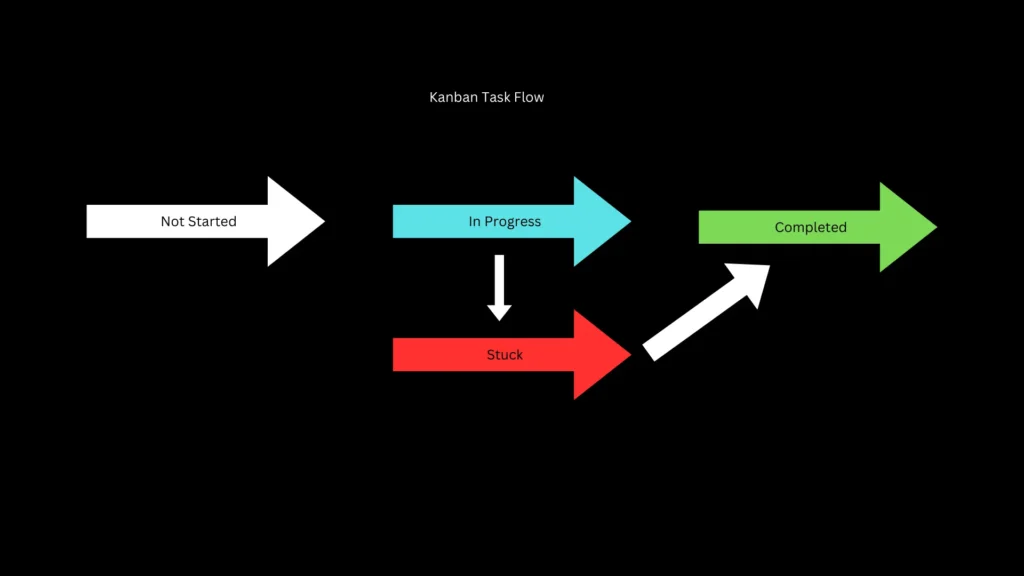Summary
Kanban flow refers to the process of moving tasks through the different stages of the Kanban board, from beginning to completion. A good example of this is a kanban board with three columns, “Not started”, “In progress” and “Completed”. This structure allows you to quickly identify which stage any given task is currently on, and makes the desired flow of the tasks through the board easy to use and obvious for all of the people using it.
How to Manage Kanban Flow
Managing kanban flow mostly comes down to picking a solid and easy-to-use board structure as described above, however there far is more to it. What we really want to avoid is creating bottlenecks in our kanban or letting tasks go stale (a stale task is a task that has been stuck in progress for an extended period).
Avoiding bottlenecks
In order to avoid bottlenecks in our flow we want to make sure each person is only working on one task at a time. If one of your employees for example drags 5 tasks into the “in progress” column despite only working on one. This completely breaks the kanban and gives everyone an unrealistic view of what is happening. Maybe they will only finish 3 tasks and forget about the others letting them go stale.
To stop this from happening we can enforce rules on our board, only letting each person drag one task into the “in progress” column at a time and enforcing that task must be moved on from in progress before they can move another task in, will keep the flow of this board intact.
Stale tasks
There are many reasons for a task to go stale on the board, many can be valid for example maybe an employee assigned to the task goes sick. or maybe the task has been started but you have run out of inventory and need to complete it? whatever the reason it is very important these tasks are managed effectively and completed as soon as possible. Otherwise, you will lose your kanban flow.
To help with this effective management Mist will highlight stale tasks so everyone can be made aware of its current status. In order to actually manage this task we can create another column this time called “stuck”. We can enforce a rule on this column that only stale tasks will be moved in. This way we can move the task out of in progress to maintain our other principles of avoiding bottlenecks while retaining a record of the actual stale task.
When this task can eventually be resolved we can then finally move it to completed completing the flow of the task.



Leave a Reply